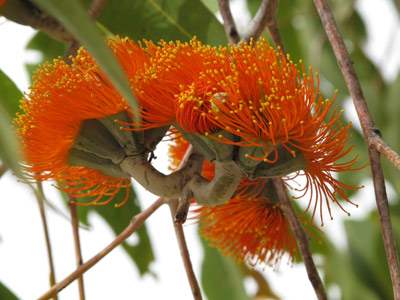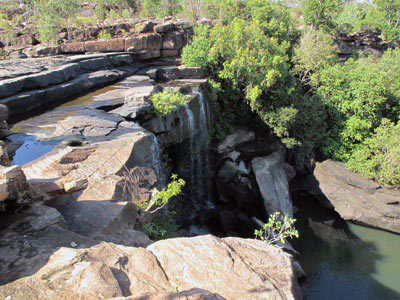Leaving Imintji Wilderness Camp early in the morning, the truck headed east-north-east through the heart of Kimberley cattle country to Galvans Gorge. From the car park a short walk took us through the bush to a picturesque, almost circular waterhole formed by a waterfall that cascades roughly 20 metres from the escarpment above.






